Making Memory: Seven Monumental Projects
Each of the seven projects, selected by Sir David Adjaye, is presented in a dedicated room alongside specially commissioned video interviews and immersive site-specific displays.
Gwangju River Reading Room
The River Reading Room was a structure that responded to Gwangju’s ten-day pro-democracy uprising in May 1980, which ended in the massacre of hundreds of students and citizens.
A collaboration between Adjaye and the writer Taiye Selasi, the pavilion houses a library of 200 books about histories of social justice and protest, curated by Selasi. The space acts as a public reading room, encouraging the city’s inhabitants to exchange books and ideas related to freedom, democracy, equality and human rights.
In the exhibition, visitors will be able to sit among a replica library and read some of the books selected for the original Gwangju pavilion.

Image Credit | Kyungsub Shin
Smithsonian National Museum of African American History and Culture
The museum was inaugurated by President Obama in September 2016 on the last available plot at the National Mall in Washington D.C. and was a long-awaited symbol of the African American contribution to the nation’s history and identity. Adjaye’s approach created a meaningful relationship to this unique site as well as a strong conceptual resonance with America’s longstanding African heritage.
The exhibition features inspiration materials including a sculpture by the early 20th-century Yoruba artist, Olowe of Ise - which inspired the tiered exterior of the museum.
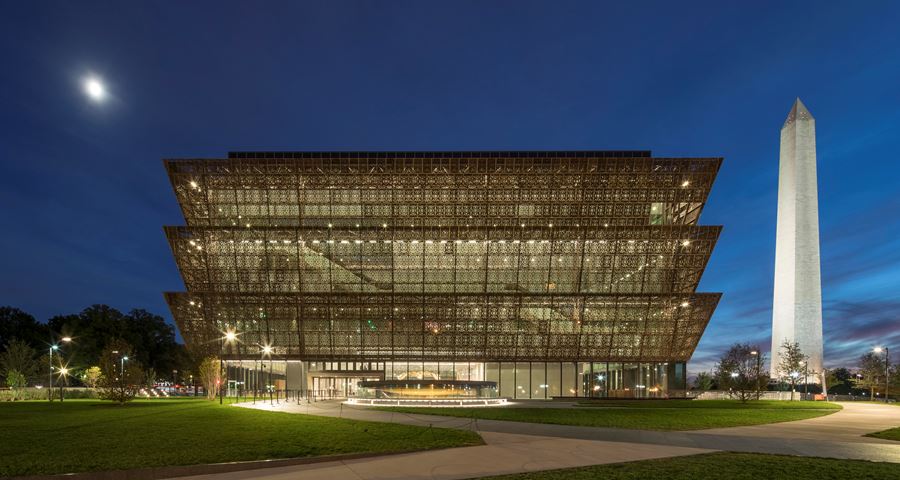
Image Credit | Brad Feinknopf
UK Holocaust Memorial and Learning Centre
UK Holocaust Memorial and Learning Centre will be the first significant building in the UK dedicated to the Holocaust and its lasting impact. The design is proposed by a team led by Adjaye Associates, with Ron Arad Architects as Memorial Architect, and Gustafson Porter + Bowman as Landscape Architect.
More than 70 years after World War II, the UK Holocaust Memorial and Learning Centre will be a space to reflect upon and learn from the genocide of Europe’s Jewish population, and other groups such the Roma and LGBT community.
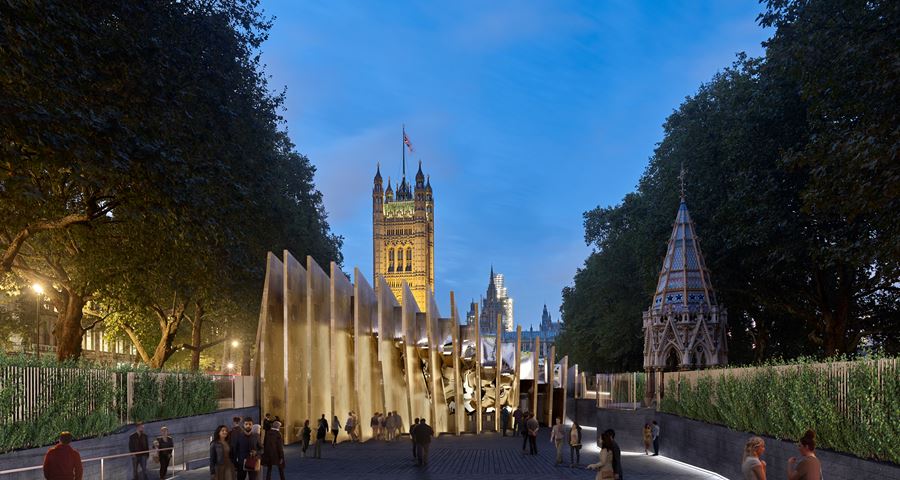
Image Credit | Adjaye Associates & Ron Arad Architects
Sclera Pavilion
Conceived as a contribution to the 2008 London Design Festival, in collaboration with the American Hardwood Export Council, the Sclera pavilion was inspired by the human eye. An exploration of form and space, it was designed as a public room in the heart of the city that could be simultaneously calming and uplifting – an immersive urban monument about slowing down in order to see and understand the world better.
See a full-scale section of the pavilion, alongside inspirations, videos and more.
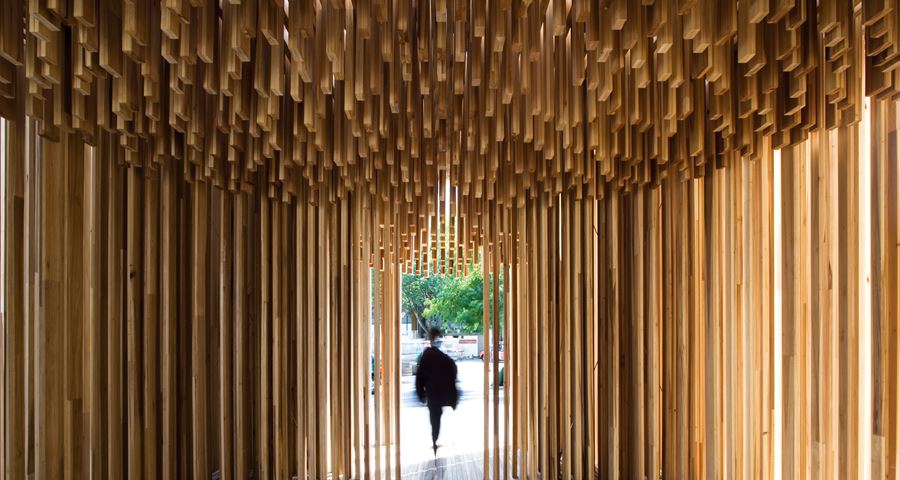
Image Credit | Leonardo Finotti
National Cathedral of Ghana
Based in Accra, the National Cathedral of Ghana will be a unique 21st-century landmark where religion, democracy and local tradition are seamlessly and symbolically intertwined.
Situated within 14 acres of landscaped gardens, the proposed design will house a two-level 5000-seat auditorium which, with the addition of two podiums designed for standing, can accommodate a congregation of up to 15,000 people. The Cathedral’s main architectural concept draws on both contemporary Christian architectural principles and motifs from traditional Akan culture.
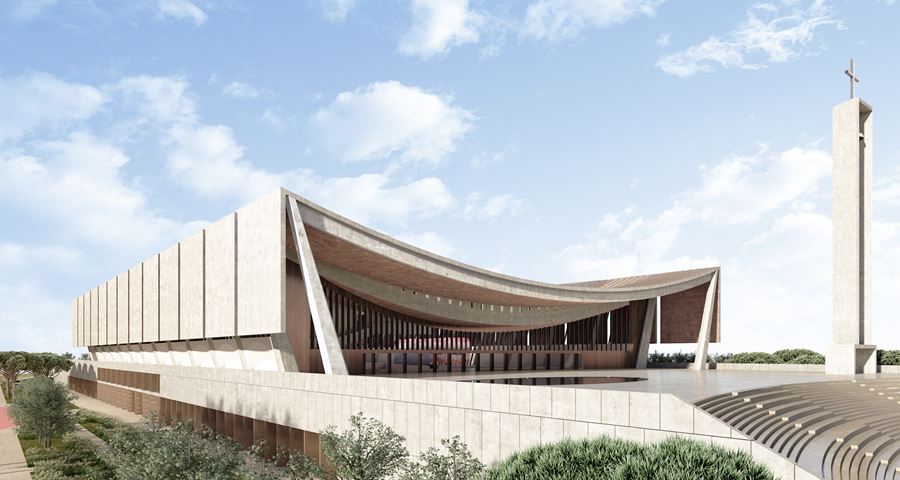
Image Credit | Adjaye Associates
Mass Extinction Memorial Observatory
Located on the Isle of Portland in the English Channel, the Mass Extinction Memorial Observatory (MEMO) will be a monument dedicated to preserving the memory of extinct species. The internal walls of the building will be lined with illustrative carvings that act as memorials to the 860 species that have already become extinct since the dodo.
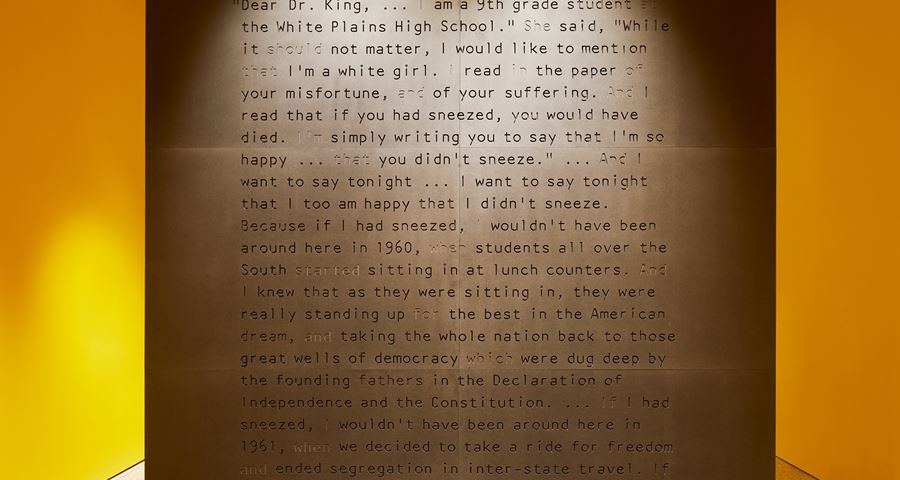
Image credit | Ed Reeve
Coretta Scott King and Martin Luther King Jr. Memorial
This is the first opportunity to see an in-depth display of the proposed Coretta Scott King and Martin Luther King Jr. Memorial in Boston.
The exhibition features Adjaye Associates proposal for the memorial, which will be placed at the highest point of Boston Common, the city where the Kings studied and met, serving as a place for discursive action and assembly. The surface of the memorial will be engraved with text from their speeches, typographically reinterpreted by African-American artist Adam Pendleton and type designer David Reinfurt.
Related exhibition